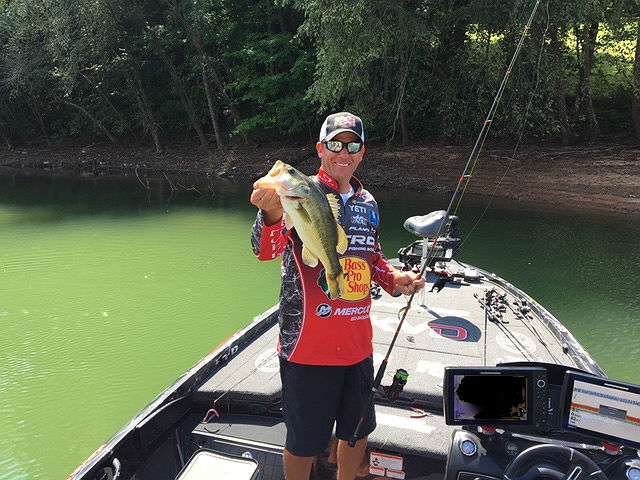
Long distance travel with a boat in tow requires some careful consideration before you leave your driveway.
I get a lot of questions about towing with or without a cover and some of the extra steps needed to ensure a safe trip and protect your investment.
For short trips around home, I don’t cover the boat, but when I’m headed for a long distance destination, I definitely put it on.
I use the custom cover that comes with my Nitro Z-21 that offers additional padding around the trolling motor, depth finders and other key points.
It’s absolutely critical to cinch your cover down tightly to avoid anything flapping loose in the wind as you head down the highway. If you trailer a lot with the cover, any part of the cover that is allowed to flap or rub can affect the finish of the boat and damage the cover.
You also want to avoid any “sags” in the cover that might catch wind or gather water during a storm and affect fuel economy.
Depending upon the kind of boat you use, that may require you to leave the front seat in or use “poles” that come with the boat cover to help keep it taut.
As added precaution, I will throw a towel over the top of my windshield and any other sharp edges to prevent chaffing of the cover or the boat itself. I’ve also seen some anglers put tennis balls over depth finder mounts or brackets to protect them from wearing into the cover.
I use the T-H Marine Kong mounts on my electronics. They remove easily, so I put my graphs in the truck when traveling. That protects them from unnecessary water, grime and dirt that you may pick up down the road. You can also use covers that fit over the graphs for protection when you aren’t covering the boat.
I also store my rods and reels in the locker. Short trips aren’t a big deal, but when you are traveling great distances, sand and dirt in the carpet will get into the reels and affect their performances.
I store my rods in the rod locker, place each rod in a Rod Sox to protect it and reduce line tangling. I will also layer towels between the but-end of the rods to prevent reels from banging against each other.
That’s something we often forget; today’s roads leading to lakes, and even some major roadways, are often bumpy. The constant vibration isn’t good on your equipment.
Nor is it good for the engine. You definitely need a good transom saver or bracket that holds the engine in place and takes pressure off the trim pins. I prefer the T-H Marine Motor Stiks, along with chalks that clamp on the steering arm to prevent the engine from moving. You don’t want the engine bouncing or moving around a lot when going over bumpy roads. It can cause unnecessary wear and damage.
I also have an Atlas Hydraulic Jack Plate which I run all the way down when making a long haul. Again, it provides better support.
Tie-downs need to be extremely tight and secure and checked periodically throughout the trip. I always do a walk around during gas stops or breaks to examine everything on the boat to make sure it’s tight and snug.
The last thing you need on a fishing trip is an issue to cause damage to your equipment or problems that may shorten the outing. Take time to do it right before leaving home and you will reduce the chance of unfortunate problems.
It’s all about the attitude!

